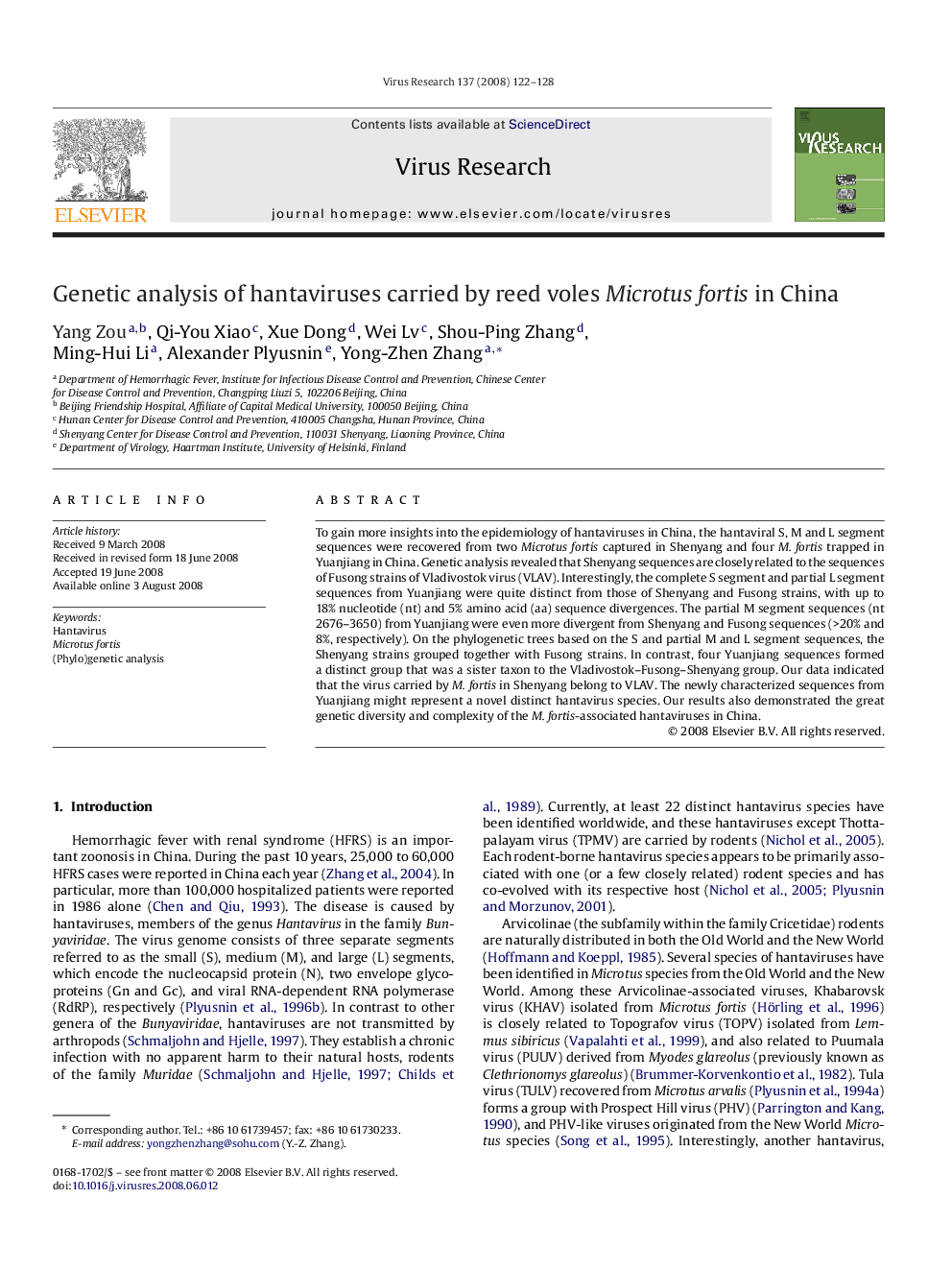| Article ID | Journal | Published Year | Pages | File Type |
|---|---|---|---|---|
| 3430335 | Virus Research | 2008 | 7 Pages |
To gain more insights into the epidemiology of hantaviruses in China, the hantaviral S, M and L segment sequences were recovered from two Microtus fortis captured in Shenyang and four M. fortis trapped in Yuanjiang in China. Genetic analysis revealed that Shenyang sequences are closely related to the sequences of Fusong strains of Vladivostok virus (VLAV). Interestingly, the complete S segment and partial L segment sequences from Yuanjiang were quite distinct from those of Shenyang and Fusong strains, with up to 18% nucleotide (nt) and 5% amino acid (aa) sequence divergences. The partial M segment sequences (nt 2676–3650) from Yuanjiang were even more divergent from Shenyang and Fusong sequences (>20% and 8%, respectively). On the phylogenetic trees based on the S and partial M and L segment sequences, the Shenyang strains grouped together with Fusong strains. In contrast, four Yuanjiang sequences formed a distinct group that was a sister taxon to the Vladivostok–Fusong–Shenyang group. Our data indicated that the virus carried by M. fortis in Shenyang belong to VLAV. The newly characterized sequences from Yuanjiang might represent a novel distinct hantavirus species. Our results also demonstrated the great genetic diversity and complexity of the M. fortis-associated hantaviruses in China.
